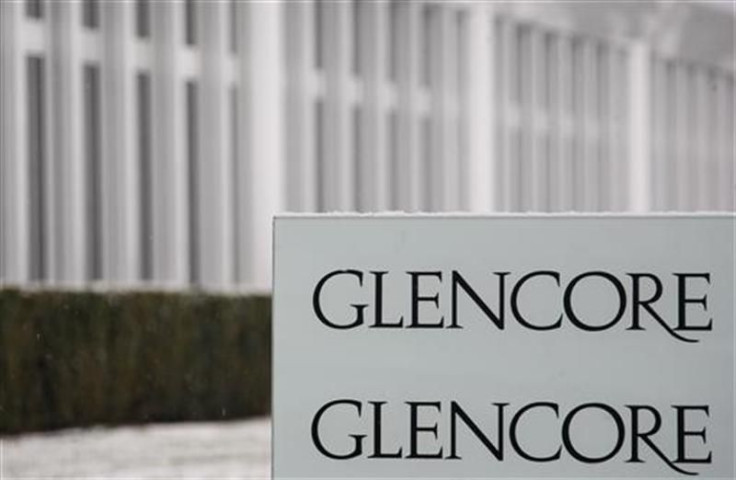Glencore and Xstrata Deal: 5 Things You Need to Know
ANALYSIS

Glencore and Xstrata are reportedly close to reaching an agreement to combine with one another in a move that would expand Glencore's massive global commodities holdings to include new mines in Africa and Asia.
The Switzerland-based companies are expected to announce a deal to combine the Xstrata Plc mines and other assets with Glencore International Plc's large base of commodities, sources with knowledge of the plan told Bloomberg on Wednesday.
Though the deal could still fall apart, if it goes through it would put the combined company at a value of about $82.46 billion, according to Bloomberg.
And that news sent stocks soaring in Hong Kong by 4.6 percent, Bloomberg reported Thursday.
Here's a list of five key things savvy investors and observers should know about the firms and their plan to combine:
1. What is Glencore's business model? One of the world's premiere commodities trading firms, Glencore already owns a major stake in Xstrata -- which mines coal and metals -- and also has sizable stakes in Century Aluminum and other major producers, according to Forbes.
Glencore, the second-largest commodities firm in the world according to the Telegraph, is a one-stop commodities shop in that provides mining, refining and supplying work, and it earns its substantial profits by charging a one to two percent commission on every ton of a commodity - be it oil or metal - that it trades. Founded in 1974, its 2010 revenue came in at $145 billion and its net income was $3.8 billion.
2. Glencore's relationship with Xsrata: Glencore and Xsrata were separated from one other a decade ago, when Xsrata paid Glencore $2.5 billion for its Australian and South African holdings and went public, Bloomberg reported. Glencore maintains a 34 percent stake in Zug-based Xsrata to this day, which adds a twist to their potential merger.
Headquartered two miles from each other in neighboring cities in Switzerland, the companies would expand their ability to compete against other commodities players if they were to combine forces. Though this does not guarantee or even suggest that any deal is forthcoming, it contributes to the conception held by many observers that they will find a way to combine in the near future. So does the fact that such a deal would create savings of as much as $704 billion, according to an October Credit Suisse report.
3. Why combine now: The commodities industry is seeing an acceleration of mergers and acquisitions as larger companies look to leverage their increasing profits to expand their assets and market share. Glencore and other commodities giants see this move as strategically sound because they can bet safely that the world's need for energy and other commodities will explode in coming decades.
For firms with a large bottom line and global reach like Glencore, the only view is the long view, and that means bringing in new assets and opportunities that are almost guaranteed to pay off in the long run. And Glencore's CEO Ivan Glasenberg said in August that his company is aggressively seeking mergers and acquisitions, according to Bloomberg.
4. Glencore's interest in China: Of all the markets in the world, China may be the best opportunity for Glencore to ramp up its profits in coming decades, and Glencore knows it. As China continues to modernize and uses more and more energy, Glencore is looking to be there to supply the oil, coal and other resources needed to keep the lights on and cars running in the populous Asian nation.
With its multi-trillion-dollar surplus, the Chinese will continue to increase consumption, and Ray Bartoszek, managing director of oil at Glencore, told the Stamford Advocate that the company wants to be in the best position to fulfill its needs.
Chinese oil production plateaued at 4 million barrels a day. Chinese oil demand was 5 million barrels a day in 2002, and it's 8 million barrels a day in 2010, Bartoszek said. China will increase its strategic reserves to avoid being at the whims of the world.
5. What's in it for Xstrata: Market valuations for mines have been sliding in recent years, according to Bloomberg, as major players like Glencore and Vitol Group -- the world's largest commodities trader -- have edged out their market share. Mining companies have seen a decrease in valuation of about 13 percent in the past year. Also, the decline of metal prices, which Bloomberg reports have fallen about 13 percent in the past year, leaves Xstrata in a situation where selling to a trusted company with a 34 percent current stake may be a better option than trying to wait out the market as the big boys continue to make big plays.
© Copyright IBTimes 2024. All rights reserved.





















